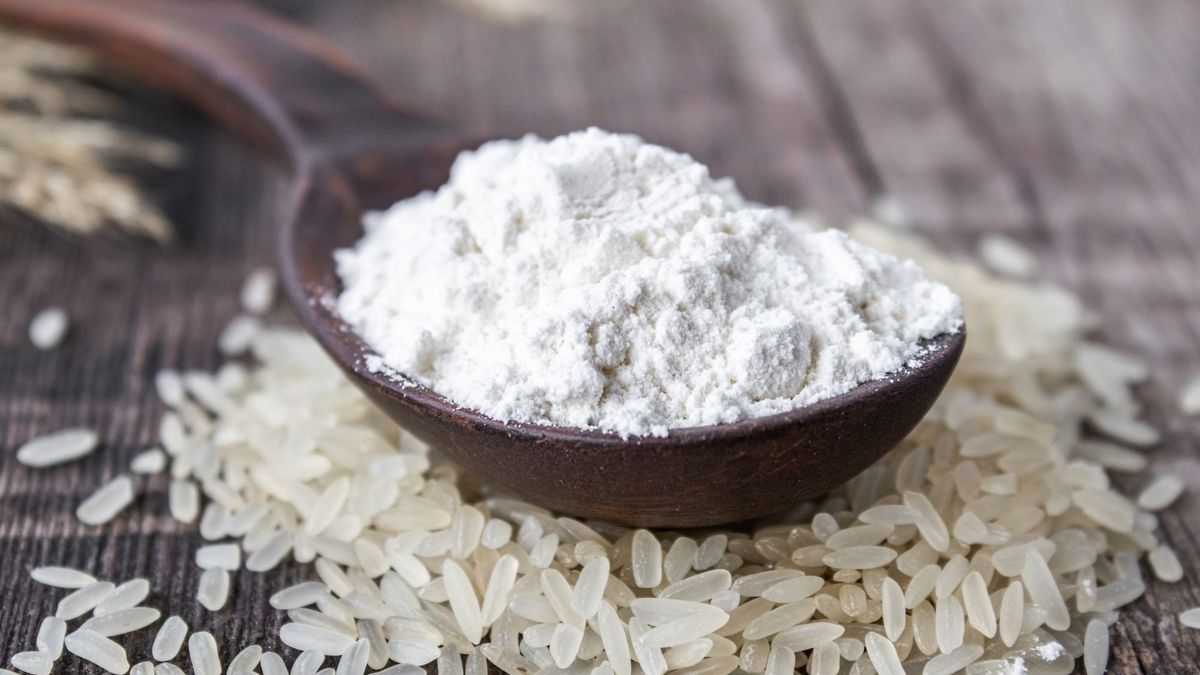
Rice flour is mainly used in Asian cuisine. In Europe, it is increasingly easy to find. Rice flour is especially of interest to people with gluten intolerance or those who want to follow a gluten-free diet. Find out its advantages, disadvantages and whether it can replace wheat flour, thanks to the informed opinion of our dietetics and nutrition expert, Alexandra Murcier.
Calories and nutritional values of rice flour
Compared to wheat flour, rice flour has similar nutritional and caloric values. Also, rice flour has little nutritional benefit, although it has other health benefits:
Calories
- Content per 100 g of rice flour: 357 kcal
- Content per 100 g of wheat flour: 356 kcal
Proteins
- Content per 100 g of rice flour: 7.62 g
- Content per 100 g of wheat flour: 9 g
Carbohydrates
- Content per 100 g of rice flour: 73.9 g
- Content per 100 g of wheat flour: 75.9 g
Eau
- Content per 100 g of rice flour: 11.4 g
- Content per 100 g of wheat flour: 12.4 g
Can rice flour replace wheat flour? What are the differences between the two?
“The rice flour is gluten freeinforms us Alexandre Murcier, dietitian-nutritionist, working in Paris 17th. Even if it does not have many nutritional qualities, rice flour replaces wheat flour in cases of gluten intolerance, since it does not contain this protein..
The gluten in fact represents a group of proteins present in certain cereals, notably in wheat, rye, oats or barley. THE gluten can be poorly tolerated by certain organisms, the digestion of this protein being complicated: in fact, it has an elastic property and acts like a sort of glue, slowing down the digestion and assimilation of nutrients. People may be gluten sensitive and decide to cut gluten out of their diet, while others suffer from intestinal disease, such as celiac disease or irritable bowel syndrome.
And for people who think that rice flour is a lighter version of wheat flour, this is a popular belief, at least if the flour is made from white rice. “When rice flour does not come from brown rice, it has a high glycemic index, which means it has the ability to increase blood sugar levels quickly. White rice flour is therefore not ideal for weight loss”, points out our nutrition expert.
What is the benefit: is rice flour good for your health?
Ideal in cases of gluten intolerance or celiac disease
The main benefit of rice flour is that it is suitable for people sensitive or intolerant to gluten (since it does not contain any) who are more frequently women than men. Gluten intolerance or celiac disease is characterized by difficulty digesting, a swollen stomach and diarrhea. It is a chronic intestinal disease caused by the ingestion of gluten, linked to the level of gliadin (gluten protein) it contains. There gliadine, very present in wheat, is the cause of inflammatory intestinal reactions and sometimes damage to the intestinal mucous membranes. In fact, the walls of the intestines are made up of villi, which, upon contact with gluten, atrophy. Their volume decreases until it disappears, which causes the symptoms of celiac disease. Nutritional problems can also occur because nutrients, minerals and vitamins are less well assimilated by the body. This progressive disease becomes chronic. There celiac disease On the other hand, it is unlike gluten allergy, causing symptoms that appear suddenly and are sometimes very severe.
Suitable for irritable bowel syndrome
Irritable bowel syndrome or functional colopathy is an intestinal dysfunction. This disease is benign, but the symptoms it causes can impair patients’ quality of life. In fact, most of them suffer from abdominal pain, intestinal transit problems, constipation and/or diarrhea accompanied by digestive discomfort. In the case of the functional colopathy, also affecting women more frequently than men, the avoidance of gluten seems to contribute to the improvement of symptoms, especially diarrhea. However, before considering stopping gluten, an intolerance must be diagnosed by a doctor. In all cases, it is advisable to consult a specialist, such as a nutritionist.
Generally speaking, in cases of chronic diarrhea, rice flour or a gluten-free diet are of certain interest. However, in this specific case, it is better to choose white rice flour; THE complete rice contains fibers which accelerate intestinal transit, unsuitable for patients suffering from diarrhea.
How to choose the right rice flour? white or complete?
It is preferable to choose whole rice flour. In general, it is always advisable to consume whole products, such as pasta, rice or other cereals: when whole, the grain keeps its outer shell, very rich in dietary fiber, minerals and phosphorus. However, fibers are essential for the proper functioning of the digestive system and contribute to intestinal well-being.
“When consuming whole grains, blood sugar levels increase less quickly than when ingesting refined products (white pasta, white rice, non-whole wheat flour, etc.). This way, the glycemic index is lower“, explains Alexandre Murcier.
“Also, rice flour comes from rice-producing countries, mainly from Asia. Ideally, you should choose rice flour from organic farming in order to limit the ingestion of pesticides,” advises our expert. You can therefore find it in a grocery store or on the shelves of organic stores.
Contraindications to rice flour
THE contraindications to rice flour are rare. Symptoms that could potentially occur in the event of an intolerance would be a rash, itching or even nausea. People with blood sugar disorders or diabetes should moderate their consumption of rice flour, as it is a food with a high glycemic index (GI).
Recipe: what to do with rice flour (cake, crepes, bread, pancakes, etc.)?
“Rice flour is mainly used to make Asian dishes, such as Chinese noodles or spring rolls.indicates the dietitian. It acts a bit like cornstarch, as a thickener.” It can therefore be used to thicken sauces or creams. It will bring a soft touch and a slight nutty taste to your culinary preparations.
It remains ideal for people advocating or needing a gluten-free cooking.
The rice flour However, it is not ideal for making pastries or bread, just like coconut flour for example. Indeed, these preparations need gluten for elasticity. It will therefore be necessary to supplement the rice flour with a flour rich in gluten (rye, oats, for example). On the other hand, you can use buckwheat flour to cook pancakes, muffins, cakes or even cakes.
It is also possible to use rice flour for breading fish or white meat. To make a crispy breading, the flour must be bound with egg yolk.

